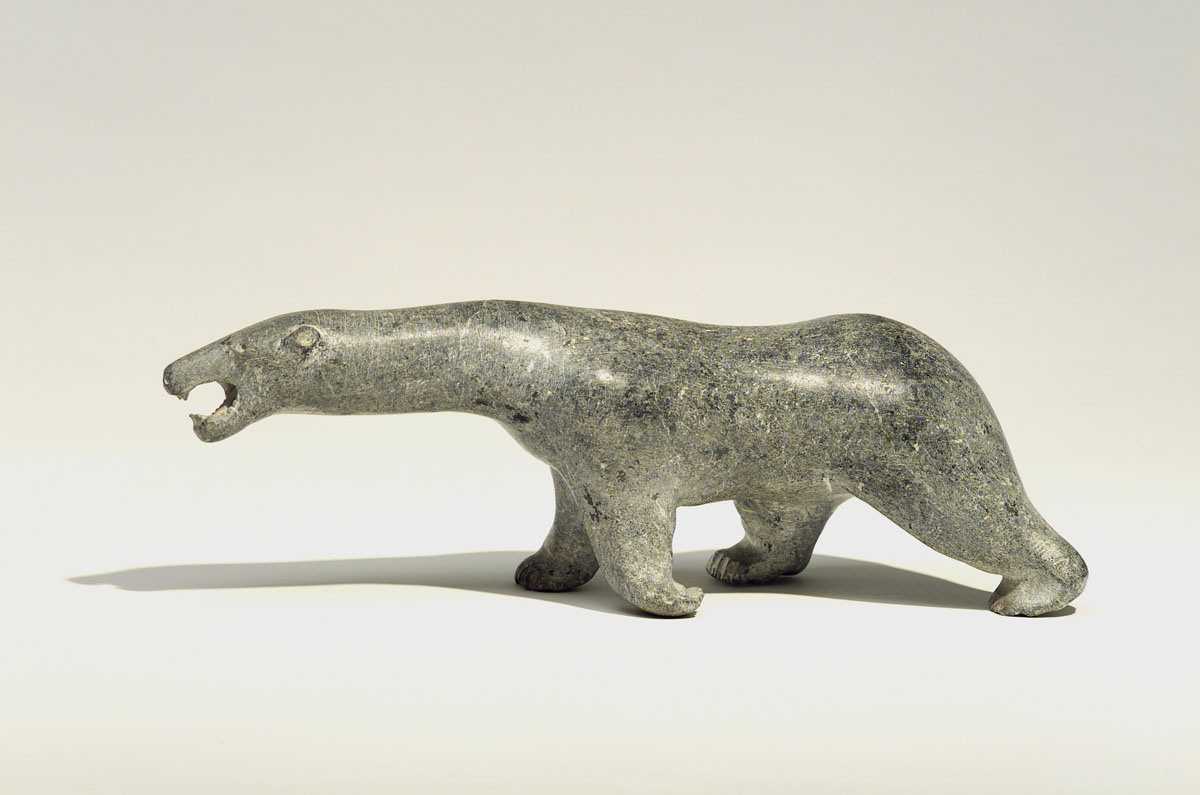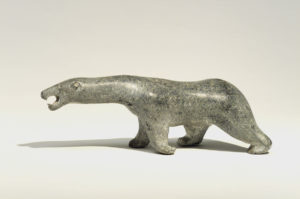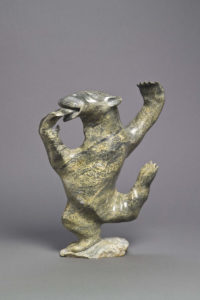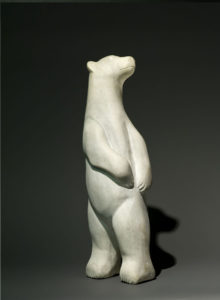Art Inspired Activity

John Kaunak Canadian (Repulse Bay), b. 1941 Stalking Polar Bear, 1963 stone 8.5 x 26.1 x 8 cm Collection of the Winnipeg Art Gallery, Twomey Collection, with appreciation to the Province of Manitoba and Government of Canada, 3077.71
Polar Bear Diorama Lesson
Let’s look at these three sculptures of polar bears from the WAG’s collection:

John Kaunak
Canadian (Repulse Bay), b. 1941
Stalking Polar Bear, 1963
stone
8.5 x 26.1 x 8 cm
Collection of the Winnipeg Art Gallery, Twomey Collection, with appreciation to the Province of Manitoba and Government of Canada, 3077.71
Look closely at the three sculptures. Using your body, recreate the poses of each of these sculptures. Hold the pose for a minute. Is there an action that the pose should do (for example, waving arms, crawling)? What sound would the bear make in each of the sculptures?
Create a Polar Bear Diorama
Materials:
- Cardboard box (shoe box, cereal box, etc.)
- Scissors
- Tape
- Pencil or pen
- Two pieces of paper
- Colouring materials (crayons, pencil crayons, markers, or paint)
- Glue
Activity:
- Tape down the flaps or the lid of the cardboard box.
- Draw a window on the front of your box (have the lid on and cutting into the frame will heighten the illusion of looking through a window into a new space).
- Creating the background: take a piece of paper and place the box on top. Draw lines at the top and the bottom of the paper to get the size of the box on the paper. If possible, keep the sides of the paper longer than the length of the box.
- Using scissors, cut the lines that you drew. Test to see if your paper will fit into the box. If it doesn’t quite fit, you may need to trim the paper a bit.
- Now create a landscape drawing for the background of your diorama on the paper. Think about what the environment of the arctic looks like? Is it going to be daytime or nighttime in your diorama?
- Using the other piece of paper, draw one, two or all of the polar bear sculptures. Bring the sculptures to life by drawing them.
- Cut the polar bear drawings out. Decide where you are going to place the drawings in your composition, and then glue them in the diorama.
- Using materials you have on hand, be creative with the outside of the diorama box.
Further questions:
- How does the outside of your diorama relate to the inside of your diorama?
- Create a story about what is happening in your diorama.
- Give your artwork a title.
Teachers, parents, and guardians:
Polar bears play an important role in the arctic and are often celebrated in artworks by Inuit artists. Encourage students to learn more about polar bears and life in the north. Art can create a bridge to learning about a variety of cross-curricular subjects such as biology, environmental issues, cultural studies, language arts, etc. Delving into an immersive project can bring a breadth of knowledge. Let the student’s curiosity lead what areas of the project are of most interest to them.
Related Stories
WAG-Qaumajuq is open Wednesday to Sunday, 11am to 5pm. To plan your visit, check out wag.ca/visit.


